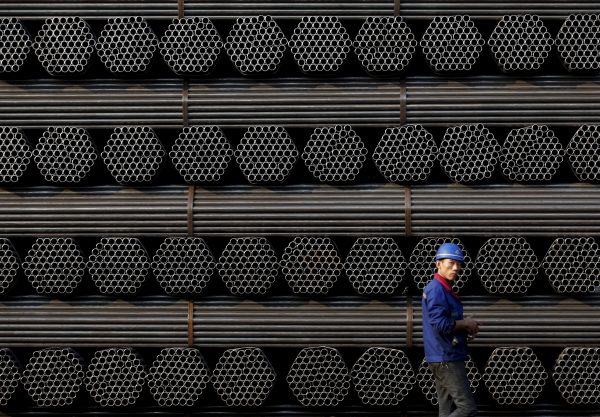China’s economic footprint alone means that its impact around the world is huge. Its sheer size means that the inevitable shocks and policy missteps it generates will impact on its global partners.
But China is not yet as developed an economy as Japan was by the end of the 1970s, then already a high-income country. China faces the myriad development problems of middle-income countries everywhere, from its undeveloped financial system and winding path to rule of law, to its pressing environmental challenges. Some of China’s woes on the way to economic and social advancement are those with which others, like Japan, have also had to deal.
At the heart of China’s economic problems today are so-called zombie enterprises. This is a species with which followers of the Japanese economy will be familiar with from the early days of its lost decades.
Japanese ‘zombie’ firms were propped up by Japanese banks (and ultimately by the government) after the collapse of the Japanese asset price bubble at the beginning of the 1990s. Weak or failing firms like the retailer Daiei that expanded greatly during the period leading to the crash, and under different circumstances would have been expected to have entered receivership or bankruptcy, were kept afloat because they were considered ‘too big to fail’. The term reappeared in the global financial crisis when the United States set up a fund to bail out major corporate failures.
Now China has spawned its own zombie firms. Over 70 per cent of China’s debt overhang is held by state-owned enterprises, many of whom comprise a vast tribe of walking dead, propped up by bad loans from state-owned banks that they are never likely to be able to repay.
By 2016, following the downturn in the Chinese economy, Chinese industrial companies had developed huge overcapacity problems. Industrial overcapacity has risen from negligible levels before the global financial crisis to levels higher than 30 per cent in industries such as steel and cement. At this year’s National People’s Congress, the Chinese government recognised the issue of ‘zombie enterprises’ and declared that it will shut down or reorganise many state-owned industrial companies by 2020.
As He Fan makes clear in this week’s lead essay, delivering on this goal will not be easy. It is at the heart of China’s reform agenda. Dr He’s analysis is featured in the latest issue of East Asia Forum Quarterly.
‘As Warren Buffett said’, writes He, ‘when the tide goes out, you can see who’s been swimming naked. As China’s growth slows, an army of zombie enterprises has emerged. These zombie companies are heavily indebted, kept afloat only by continuous support from government and banks. The government does not want to see zombie companies wiped out because it worries about the messy results — rampant unemployment and a significant loss of tax revenue. The banks are willing to lend a hand because they do not want to see their earnings fall when forced to make provisions to bad debts’.
He and his colleagues argue that the overcapacity problems in Chinese heavy industry are far worse than is officially acknowledged. In six of the worst affected industries (steel, coal, cement, glass, paper and non-ferrous metal), cutting back overcapacity by 10 per cent, they estimate, would make 4.3 million workers redundant. The cost of unemployment relief is likely to be between US$24 and US$73 billion.
‘In 2009, debt owed by the Chinese government, households, the financial sector and the non-financial sector amounted to 49 per cent, 24 per cent, 15 per cent and 99 per cent of GDP respectively. By the end of 2015, these ratios had increased to 57 per cent, 40 per cent, 21 per cent and 131 per cent’. The corporate sector’s leverage ratio is exceptional compared with other economies.
A quarter of Chinese companies’ profits, it is reckoned, were too low in the first half of this year to cover their debt-servicing obligations. Earnings are languishing while loan obligations increase.
The cost of closing or downsizing Chinese zombie enterprises is likely to be much higher than currently estimated. The government is hesitant to swallow the bitter pill of factory closures and employee layoffs. But, as He points out, merging ailing companies will only create more giant zombies, and debt-for-equity swaps may turn zombie enterprises into much more dangerous zombie banks.
This is a major problem for the Chinese authorities and one that will not be resolved without pain and cost. Delay in dealing with it will only cause bigger problems later, not only for Chinese industrial performance, but for a world also seriously buffeted by Chinese industrial overcapacity.
The EAF Editorial Group is comprised of Peter Drysdale, Shiro Armstrong, Ben Ascione, Ryan Manuel, Amy King and Jillian Mowbray-Tsutsumi and is located in the Crawford School of Public Policy in the ANU College of Asia and the Pacific.

